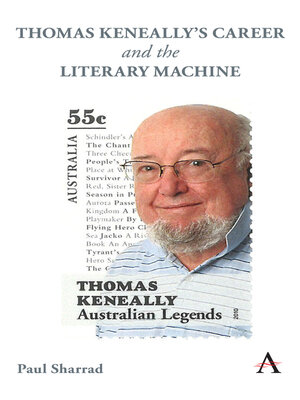Thomas Keneally's Career and the Literary Machine
ebook ∣ Anthem Studies In Australian Literature and Culture
By Paul Sharrad

Sign up to save your library
With an OverDrive account, you can save your favorite libraries for at-a-glance information about availability. Find out more about OverDrive accounts.
Find this title in Libby, the library reading app by OverDrive.



Search for a digital library with this title
Title found at these libraries:
| Library Name | Distance |
|---|---|
| Loading... |
Booker Prize winner and Living National Treasure, Thomas Keneally still divides critical opinion: he is both a morally challenging stylist and a commercial hack, a wise commentator on society and a garrulous leprechaun. Such judgements are located in the cultural politics of Australia but also linked to ideas about what a literary career should look like. 'Thomas Keneally's Career and the Literary Machine' charts Keneally's production and reception across his three major markets, noting clashes between national interests and international reach, continuity of themes and variety of topics, settings and genres, the writer's interests and the publishers' push to create a brand, celebrity fame and literary reputation, and the tussle around fiction, history, allegory and the middlebrow. Keneally is seen as playing a long game across several events rather than honing one specialist skill, a strategy that has sustained for more than 50 years his ambition to earn a living from writing.
|Thomas Keneally is known as a best-selling novelist and public figure in his Australian homeland and has also managed a transnational career. He is, however, something of a conundrum in being regularly disparaged by critics and often failing to meet expectations of sales. 'Thomas Keneally's Career and the Literary Machine' explains some of the reasons behind such disparities, focusing in part on his deliberate transition from high-style modernist to 'journeyman' entertainer while continuing to write across both modes.
Reactions to this shift have been framed by critical and cultural investments, and by an idea of the literary career common to both high literary and popular taste. This study examines the complex network that is a career, considering personality traits, authorial agency, agents, editors and shifts in publishing from colonial control to multinational corporations. As such, the study moves across and beyond conventional literary biography and literary history, incorporating aspects of book history and celebrity studies.
In doing so, this book relies on Keneally's extensive archive, much of it previously unexamined. It shows his ambition to earn his living from writing playing out across three markets, his work in other modes (writing for the stage and screen, travel writing, historical narratives) and the breadth and depth of expressions of his social conscience, including political protest, leading professional associations and work for constitutional reform, the Sydney Olympics, and so on. Keneally is seen as playing a long game across several events rather than honing one specialist skill, a strategy that has sustained for more than 50 years his keenness to live off writing.







